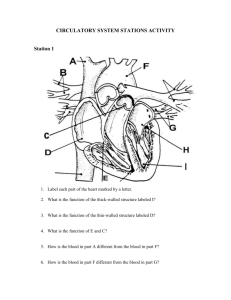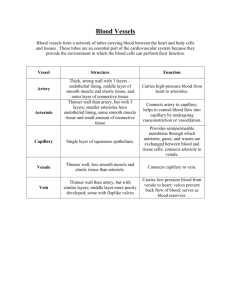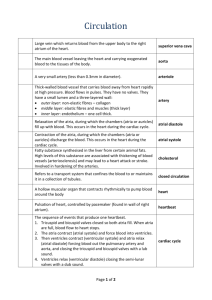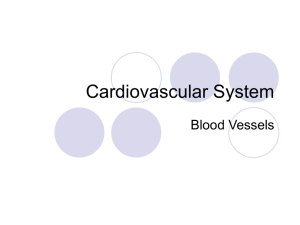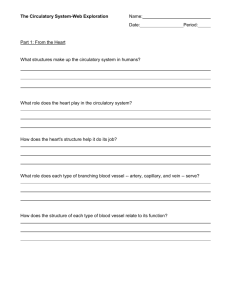heart revision PPQs and answers
advertisement
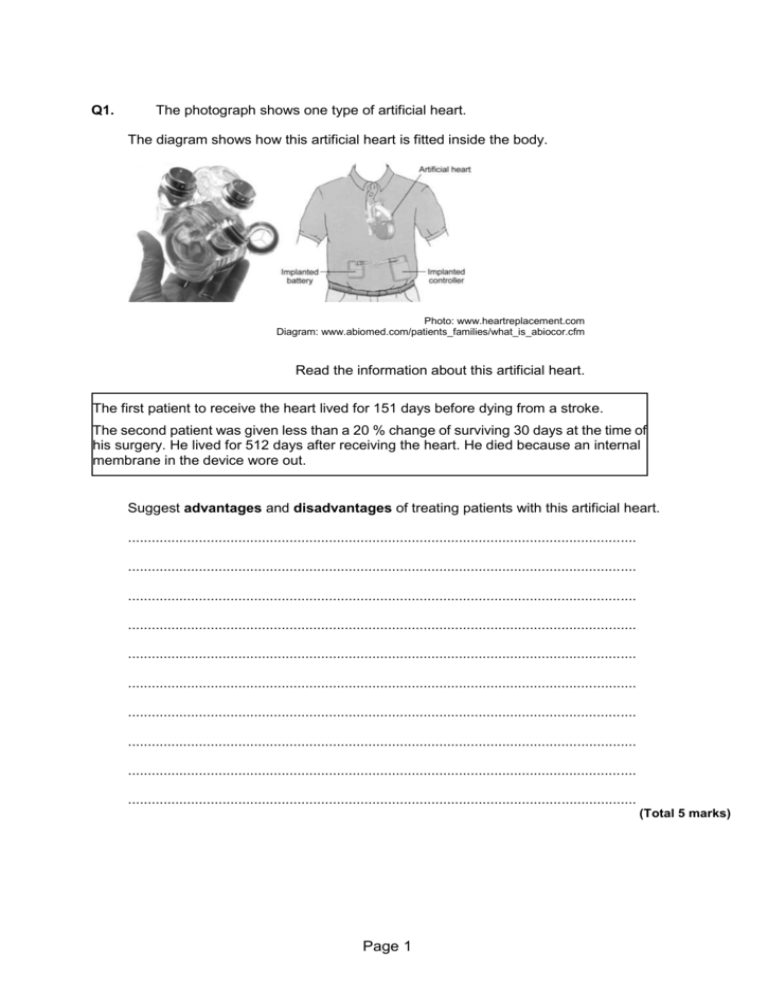
Q1. The photograph shows one type of artificial heart. The diagram shows how this artificial heart is fitted inside the body. Photo: www.heartreplacement.com Diagram: www.abiomed.com/patients_families/what_is_abiocor.cfm Read the information about this artificial heart. The first patient to receive the heart lived for 151 days before dying from a stroke. The second patient was given less than a 20 % change of surviving 30 days at the time of his surgery. He lived for 512 days after receiving the heart. He died because an internal membrane in the device wore out. Suggest advantages and disadvantages of treating patients with this artificial heart. ................................................................................................................................. ................................................................................................................................. ................................................................................................................................. ................................................................................................................................. ................................................................................................................................. ................................................................................................................................. ................................................................................................................................. ................................................................................................................................. ................................................................................................................................. ................................................................................................................................. (Total 5 marks) Page 1 Q2. (a) (i) Draw a ring around one word to answer each of the following questions. Which type of blood vessel carries blood out of the heart? artery capillary vein (1) (ii) artery Which type of blood vessel allows substances to enter and leave the blood? capillary vein (1) (b) Use words from the box to complete the sentences. alveoli cell membrane nucleus plasma red blood cells villi Oxygen enters the blood through the walls of the .................................................... . Most of the oxygen transported by the blood is carried in the ................................................................................................................................... . A red blood cell is different from other body cells because it does not have a .................................................................. .(3) (Total 5 marks) Q3. The diagram shows part of the circulatory system. (a) Name the types of blood vessel labelled A, B and C on the diagram. A ................................................................. B ................................................................. C .................................................................(3) (b) What is the job of the circulatory system? Page 2 .................................................................................................................................... .................................................................................................................................... (1) (c) Give two ways in which the composition of blood changes as it flows through the vessels labelled X on the diagram. 1 ................................................................................................................................. .................................................................................................................................... 2 ................................................................................................................................. .....................................................................................................(2)(Total 6 marks) Q4. The heart pumps blood around the body. This causes blood to leave the heart at high pressure. The graph shows blood pressure measurements for a person at rest. The blood pressure was measured in an artery and in a vein. (a) Which blood vessel, A or B, is the artery? Blood vessel ........................ Give two reasons for your answer. Reason 1 ..................................................................................................................... ..................................................................................................................................... Reason 2 ..................................................................................................................... .............................................................................................................................(2) (b) Use information from the graph to answer these questions. Page 3 (i) How many times did the heart beat in 15 seconds? ................................ (1) (ii) Use your answer from part (b)(i) to calculate the person’s heart rate per minute. ........................................................................................................................... ........................................................................................................................... Heart rate = ...................... beats per minute (1) (c) During exercise, the heart rate increases. This supplies useful substances to the muscles and removes waste materials from the muscles at a faster rate. (i) Name two useful substances that must be supplied to the muscles at a faster rate during exercise. 1 ........................................................................................................................ 2 ........................................................................................................................ (2) (ii) Name one waste substance that must be removed from the muscles at a faster rate during exercise. ........................................................................................................................... (1) (Total 7 marks) Q5. The diagram shows the human breathing system. (a) On the diagram, label structures A and B. Choose your answers from the words in the box. alveolus capillary diaphragm rib In the lungs, oxygen passes from the air into the blood. Carbon dioxide passes from the blood into the air. 2) (b) Which letter, A, B, C or D, shows where oxygen enters the blood? (c) When oxygen enters the blood it combines with haemoglobin. Page 4 (1) Draw a ring around the correct word or phrase to complete each sentence. plasma (i) Haemoglobin is found in the red blood cells . white blood cells 1) plasma (ii) Most of the carbon dioxide is carried by the red blood cells . white blood cells 1)(Total 5 marks) Q6. The diagram represents the human blood circulation system. (a) A, B, C and D are blood vessels. (i) Give the letter of one blood vessel that is an artery. .................................... (1) (ii) Give the letter of one blood vessel that is a vein. .................................... (1) (b) A student pedalled an exercise cycle at constant speed for 5 minutes. The student’s heart rate was recorded at one-minute intervals during the exercise. The results are shown in the graph. Page 5 (i) What was the student’s heart rate before the exercise began? ................................................ per minute (1) (ii) How long was it before the student’s heart rate reached 124 beats per minute? ...................................................... .minutes (1) (c) Which of the following parts of the blood carries most oxygen? Draw a circle around one answer. plasma red blood cells white blood cells (1) (Total 5 marks) M1. advantages • useful where no other treatment available / patients near to death Page 6 or • extends lifespan 1 disadvantages • low success rate 1 • device has limited lifespan or battery will need changing 1 • discomfort from heart / battery / controller 1 • risk of infection 1 [5] M2. (a) (i) artery 1 (ii) capillary 1 (b) alveoli 1 red blood cells 1 nucleus 1 [5] M3. (a) A – artery B – capillary Page 7 C – vein 3 (b) transport OWTTE 1 (c) increased oxygen decreased carbon dioxide 2 [6] M4. (a) A no mark – can be specified in reason part if B given = no marks throughout if unspecified plus two good reasons = 1 mark high(er) pressure in A allow opposite for B do not accept ‘zero pressure’ for B 1 pulse / described in A accept fluctuates / ‘changes’ allow reference to beats / beating ignore reference to artery pumping 1 (b) (i) 17 1 (ii) 68 accept correct answer from candidate’s (b)(i) × 4 1 (c) (i) oxygen / oxygenated blood allow adrenaline ignore air 1 glucose / sugar extra wrong answer cancels eg Page 8 sucrose / starch / glycogen / glucagons / water allow fructose as an alternative to glucose ignore energy ignore food 1 (ii) carbon dioxide / CO2 / lactic acid allow CO2 / CO2 ignore water 1 [7] M5. (a) A = alveolus allow air sac / alveoli 1 B = diaphragm ignore labelling of C and D 1 (b) A 1 (c) (i) red blood cells 1 (ii) plasma 1 [5] M6. (a) (i) A or C allow lower case 1 (ii) B or D Page 9 allow lower case 1 (b) (i) 60 1 (ii) 4 1 (c) red blood cells 1 [5] Page 10
